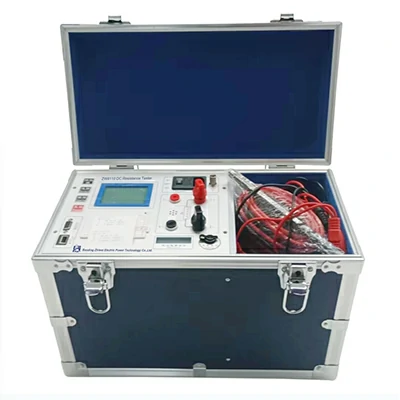The stator winding resistance test is an essential diagnostic test performed on electric motors and generators to assess the condition of the stator windings.
The frequency of the test signal can impact the test results in several ways:
- Skin Effect: At higher frequencies, such as those encountered in alternating current (AC) systems, the skin effect becomes more pronounced. The skin effect refers to the tendency of alternating current to flow more towards the surface of a conductor rather than through its entire cross-section. This means that at higher frequencies, the effective resistance of the stator winding may appear higher due to the reduced effective cross-sectional area through which current flows.
- Eddy Currents: Higher frequencies can also induce eddy currents in the conductive material of the stator winding. Eddy currents create additional losses and heating in the winding, which can affect the accuracy of the resistance measurement. These effects are more significant at higher frequencies and can result in an apparent increase in resistance.
- Transformer Effect: The stator winding behaves like a transformer winding, with self-inductance and mutual inductance effects. At higher frequencies, these inductive effects become more pronounced, leading to increased reactance in addition to resistance. This can affect the phase relationship between voltage and current measurements, complicating the interpretation of the results.
- Skin Depth: The skin depth, which represents the depth at which the current density drops to approximately 37% of its surface value, stator winding resistance test decreases with increasing frequency. As a result, higher frequencies may penetrate less deeply into the stator winding, affecting the effective resistance measurement.
- Measurement Equipment: The performance characteristics of the measurement equipment, including the impedance analyzer or ohmmeter used for the test, may vary with frequency. Some instruments may have limitations or accuracy issues at certain frequencies, which can affect the reliability of the resistance measurement.
- Insulation Properties: Higher frequencies may also stress the insulation system of the stator winding differently compared to lower frequencies. This can impact the dielectric properties of the insulation and introduce additional losses or leakage currents, which may affect the resistance measurement.
Overall, while the stator winding resistance test is typically performed at low frequencies (e.g., 50 Hz or 60 Hz), understanding the impact of frequency variations on the measurement is important for accurate assessment of stator winding condition, especially in specialized applications or when testing under non-standard conditions.
